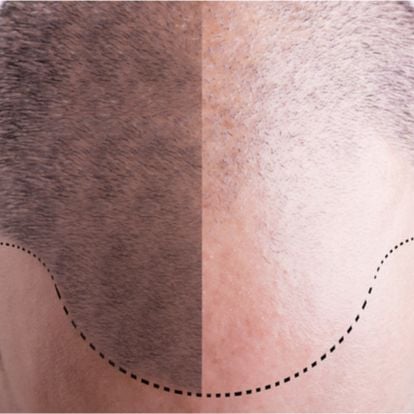 OVERVIEW
OVERVIEW
Hereditary factors, aging and hormones are the most common causes of hair loss in both men and women. A hair transplant, also known as hair replacement surgery, uses your own existing hair to recreate living hair in bald areas of your scalp. To be a candidate for hair transplantation, you must have full hair growth somewhere on the back or sides of your head, which can act as a donor site.
Procedure
Hair transplantation surgery is conducted on an outpatient basis using local anesthesia and sedation. The length of the surgery varies depending on the area that requires transplanting. A variety of transplantation techniques are available. You and your surgeon can select the best technique to accomplish your goals.
Grafting
A number of different techniques graft small areas of hair follicles and skin from a healthy site and transplant them in bald areas. These include punch grafts, mini grafts, slit grafts and strip grafts. The grafts vary by size, shape and number of hair follicles transplanted at one time - from as few as 10 to as many as 40 hair follicles. Grafting techniques are a good choice for filling in small bald spots.
Tissue Expansion
For larger areas needing hair transplantation, one technique is tissue expansion. For this procedure, the surgeon inserts a balloon-like device under an area of the scalp with healthy hair. Gradually, the balloon is filled with saline solution to inflate it and expand the area of skin that is growing new, healthy hair. After about 2 months. an incision is made and the expanded skin is placed over the bald spot.
Flap
In a flap procedure, the surgeon removes a relatively sizable area of healthy hair and skin except for a small portion so that a healthy blood flow can be retained. The flap of healthy hair is positioned over a bald spot and sewn on. Over time, new hair growth covers any scars.
Scalp Reduction
This technique is often used to treat a balding crown. An incision is made at the bottom of the crown. The section of bald skin on the crown is removed and the surrounding skin is stretched and pulled over the area and stitched closed.
Recovery
Although the different techniques vary, generally the incisions will be covered with bandages. Patients experience aching, throbbing and tightness in the scalp, which can be treated using pain medication. In some cases, drains may be used for a day or two to help eliminate excess fluid. Stitches are removed in 7 to 10 days. Swelling and bruising are normal and will subside over a few weeks. Hair can be gently washed after two days. Most patients return to normal activity within 1 week, but vigorous activity and sports may be restricted for 3 to 4 weeks.

 OVERVIEW
OVERVIEW
